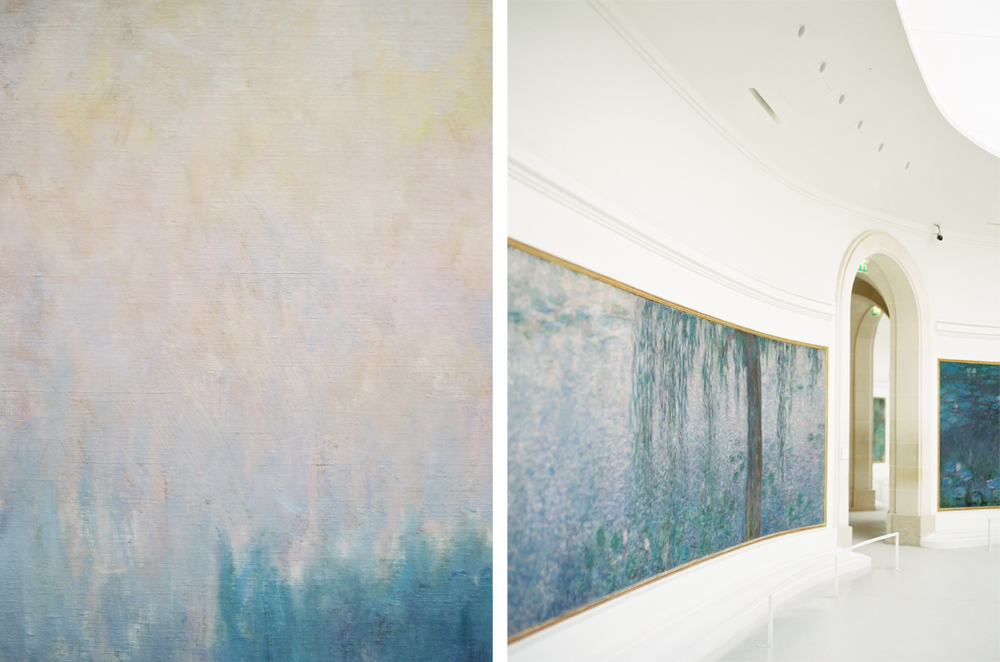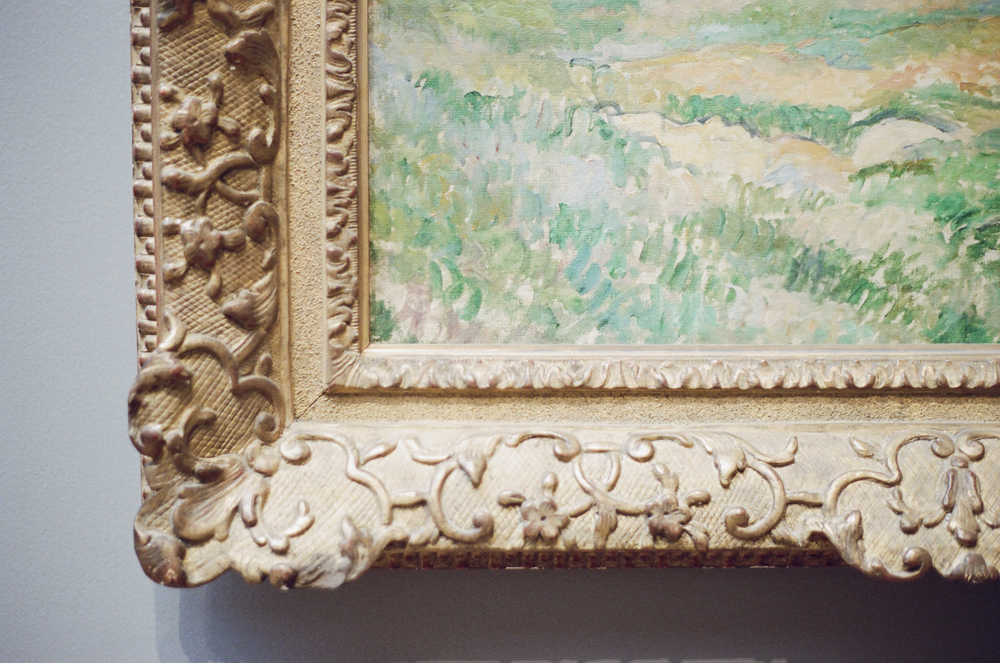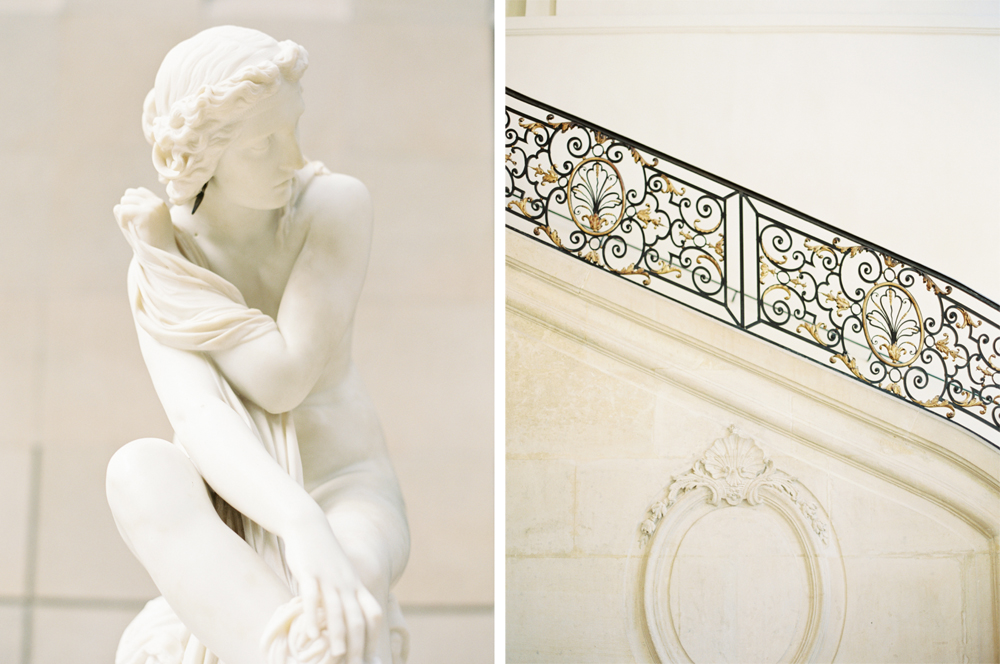VOTE DAILY FOR YOUR FAVORITE 2024 IMAGES!
learn more >>>
VOTING IS GOING ON NOW!
The
END OF THE YEAR AWARDS 2024
Photographing Art
August 13, 2020

Paris is always magic. But Paris as a 19-year-old on the front end of discovering a lifelong passion for art and photography makes the City of Light truly incredible. With my first trip to this beautiful place came a wealth of exposure to some of the greatest pieces of art in some of the world’s most famous museums – the Louvre, the Musee d’Orsay and more. This was not only the time I fell in love with Impressionism or marveled at Claude Monet’s brushstrokes for the first time; it was when I developed a new and deep appreciation for where these famous pieces are preserved and displayed – museums.
Fast forward a few years to 2014. I was beginning to dabble in film and decided to bring my little Canon 35mm camera with me on a trip to Washington DC to practice my shooting. I’d been to DC several times, and ever since beginning my love affair with art museums just a few years earlier, one of my “must-dos” for every visit was to spend time in the national Gallery. I showed up with my camera, the light meter app on my phone and headphones so I could blast Adele while I wandered solo around the museum. I had no idea how much I would learn over the next few hours or that I would find art museums to be one of the most inspiring places for me to shoot.
As I’ve continued to shoot film in art museums, I’ve come to realize that these venues hold tremendous value, both artistic and educational, for photographers. From shooting in tricky lighting conditions, to working around crowds, shooting in museums gives photographers an opportunity to see the work of masters from a new perspective, all while challenging themselves creatively and technically.

LIGHT
Photographers’ work is immeasurably influenced by their use of light. Painters share this influence, and it’s amazing to see how they can create “light” with their varied hues of pigment. Monet was so fascinated by this endeavor that he spent years painting the same scene in his garden at different times of day and in different seasons. This process resulted in his vast Water Lilies collection, housed in the Musée de l’Orangerie in Paris. In contrast to painters, photographers are more limited in their ability to create light, and photographers’ work is more inherently dependent on the existing light conditions of their subject.
This limited control over light is especially present in museums, presenting an engaging technical and creative challenge for photographers. Some art museums are light and bright, but many are distinctly darker, only illuminating the pieces themselves. These variables provide a fun creative challenge for film shooters. It’s an opportunity to experiment with how to meter certain film stocks and how they’re processed later by your lab. Maybe it’s a chance for you to use a higher speed stock. Or perhaps, this is a time when you can practice having a steady hand, especially if you’re shooting a roll that’s been metered for a brighter setting.
Understanding light is one of the most critical skills for photographers. It’s our greatest tool in creating images that reflect our mood and style, but it can often be tricky to learn and utilize well. Museums, as beautiful places with often challenging lighting, offer a unique and fun venue for photographers to practice capturing beautiful subjects in low-light environments. Whether you return home with the confidence to handhold at 1/15 or with a new devotion to Portra 800, shooting in museums will help you harness light to create images you love. Some art deco wallpaper can really inspire you.

PATIENCE
When Auguste Rodin was inspired to create a new sculpture, he never set out with a chisel and block of marble on his first day. He first drew numerous sketches of his concept before creating several clay models and plaster castings. Only after tremendous revision and tinkering did he finally move onto his final medium of stone or bronze. This process no doubt took weeks or months, but his patient pursuit of perfection is part of what makes him one of the most renowned artists of his time.
By comparison to Rodin, photography today is no doubt a speedy process. However, we live in a very different, fast-paced world. And relative to digital photography, anyone who’s ever shot film knows it’s not a medium of instant gratification. Shooting in a museum (or really any crowded place for that matter) is often a difficult, but gratifying exercise in patience.
When you look at my pictures taken at various galleries, it appears I had the entire place to myself – and oh I wish I had! In reality, though, I waited … and waited … for rooms to clear out or for someone to move before I was able to take the majority of these shots. While it certainly would have been quicker to just get photos with fellow museum-goers in them, the effect would have been much different and not what I had envisioned for my work.
Strong portfolios and a cohesive body of work are not created in a day. It takes time to hone and prioritize your unique style. Putting yourself in a position where you’re forced to be patient will give you a more discerning eye, and will ultimately increase the quality of your work. not to mention, waiting around in museums amidst some of the greatest art the world has ever seen has its own perks; it’s an opportunity to really soak up your surroundings and appreciate their timeless beauty.
Shooting film in art museums has reinforced the age-old value of quality over quantity. When I began shooting film, I really wanted to make sure I wasn’t wasting money on images that were improper- ly shot, metered, composed or that I simply didn’t love. It forced me to slow down and consider whether an image actually mattered to me before I snapped the shutter. Shooting in museums has refined this process of reflection and patience, making the images I shoot for both myself and my clients far more cohesive and meaningful.

ART APPRECIATION
Part of what made me fall in love with photography was that it gave me a new perspective on familiar scenes. Whether it was a landscape, a leaf or a portrait of a friend, looking through a camera lens allowed me to see the beauty of creation in a new way. Similarly, photographing art allowed me to enjoy it as more than an observer. By photographing it, I was now an active participant in what that painter or sculptor had created. I had the opportunity to create new art with completed works, all the while further appreciating what I was focusing on.
There is so much we can learn from the masters of numerous artistic movements throughout history. Many were trailblazers in their style, shamed by their contemporaries, but revered by history. From their use of light, posing and composition, we as photographers can carry so much of their expertise into how we shoot.
Ultimately, for me, photographing art is an inspiring way for me to continue to practice a craft that I always want to be improving in. It gives me an opportunity to interact with the artists that I admire and try to emulate. The colorful pastels of Impressionists have consistently inspired the palette I strive for in my own work. The intimacy of Rodin’s sculptures have inspired how I pose couples. The countless portraits I’ve seen painted across history have taught me the simple power of eye contact with my subjects. Shooting in art museums has made me more skilled and consistent in my craft, all the while offering an outlet to appreciate and draw inspiration from history’s most revered artists.

Emily Payne is a film photographer living among California’s golden hills and endless vineyards. She has loved photographing happy couples, beautiful scenery and colorful florals since 2011. A north Carolina native, she loves rainy days, her mom’s brownie recipe, exploring faraway places and any excuse to have a glass of champagne. If she’s not out taking pictures, she’s probably tending to her little backyard vegetable garden. You’ll often find her planning a trip to an exciting destination or hiking along the California coast with her handsome husband, Brendan.
[…] A few years back, I had the opportunity to write an article for Belle Lumiere Magazine on the value of shooting film in art museums. And yes, I was a major nerd about it – no shame! I loved compiling the images for the spread, writing about the experience of photographing art and explaining its value for those of us that shoot film. Until recently, the article as only been available to those who purchase the magazine, but today Belle Lumiere is sharing it on their blog! […]